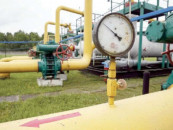Banking spread lowest in 11 years
Clocks up at 5.38% during September

STOCK IMAGE
Defined as the difference between lending and deposit rates, the banking spread on outstanding loans and deposits during September clocked up at just 5.38%. The spread shrank by 13 basis points month on month, as it was 5.51% in August.
Banking spread at ‘record low’
According to the archives on the SBP website, which date back to January 2011, last month’s banking spread was at its lowest point. A separate research note prepared by Shajar Capital puts the September reading as the lowest in the last 11 years.
Shrinking spreads reduce banks’ profitability, as they pay a higher interest on deposits but earn a smaller return on advances. Banks generally respond to such a scenario by investing more in riskless government securities that offer guaranteed returns.
The banking sector spread registered a decline of 50 basis points (0.5%) year on year in September. The banking spread had averaged 5.88% in the same month of 2014, SBP data shows. The weighted average lending rate decreased 18 basis points to 9.18% month on month while the deposit rate dropped by five basis points to 3.8% in September.
Banking spreads decline to 10-year low
According to Taurus Securities analyst Rohit Kumar, the drop in the average lending rate was because of a repricing of loan portfolio following the SBP’s low interest rate policy. Interest rates on loans are reset on a quarterly basis whereas deposits are re-priced immediately.
The banking spread on gross disbursements and fresh deposits during September, also called the ‘fresh spread’, clocked up at 2.88%, up from 2.81% recorded in August. Although the weighted average fresh lending rate remained flat at 7.78% on a month-on-month basis in September, the cost of fresh deposits was down seven basis points to 4.9% in September.

The banking spread has mostly been shrinking for the past one year in the wake of accommodative monetary policy by the SBP. The central bank has reduced the benchmark interest rate consistently since 2014, as it currently stands at a historic low of 6%.
Month-on-month: Banking spread rises 4% in June
The average spread for 2015 so far stands at 5.65%, down 37 basis points from the same nine-month period last year when it hovered at 6.02%. Cumulatively, lending and deposit rates have shrunk by 118 and 82 basis points, respectively, since the start of 2015.
Kumar says the reduction in the banking spread over the last nine months is because of easing interest rates and other regulatory measures, such as the introduction of the target interest rate and a downward revision in the interest rate corridor by a cumulative 100 basis points since February 2013.
Banking profits should have taken a hit, at least theoretically, in the wake of shrinking spreads. However, earnings of the banking sector in the first half of 2015 recorded a surge of 52% on a year-on-year basis. Financial results of many banks for July-Sept are still awaited. But those banks that have posted their quarterly earnings seem to have maintained their profitability mainly on the back of heavy capital gains on government securities.
Published in The Express Tribune, October 27th, 2015.
Like Business on Facebook, follow @TribuneBiz on Twitter to stay informed and join in the conversation.



















COMMENTS
Comments are moderated and generally will be posted if they are on-topic and not abusive.
For more information, please see our Comments FAQ